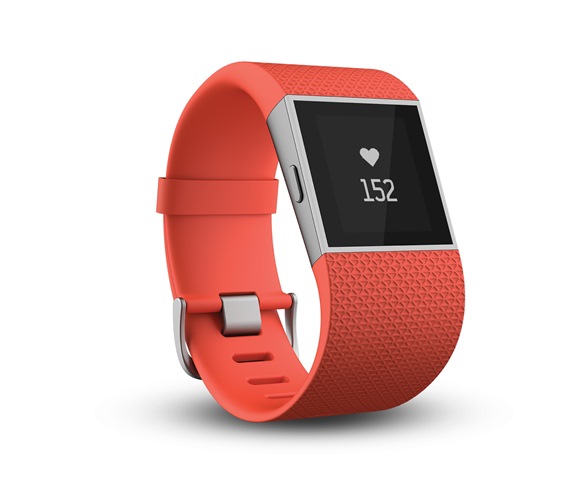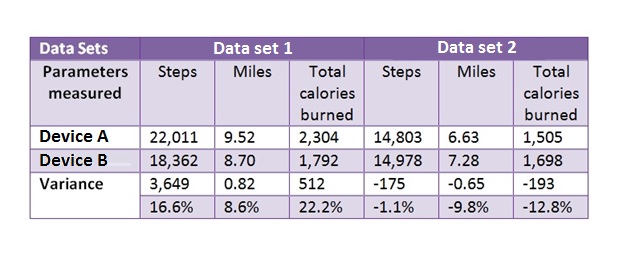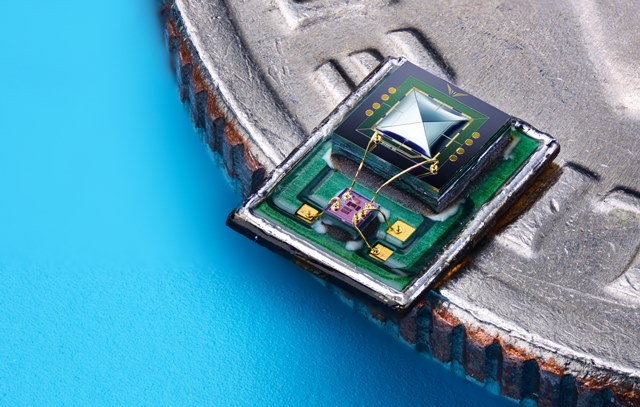The idea of using smartphones and sensors for improving healthcare and personal wellness has taken the industry by storm. Wearable exercise monitoring devices such as the Fitbit Surge (fig. 1 ) and the Garmin Vivoactive are proven hits with consumers, and more doctors and hospitals are turning to remote monitoring devices to provide better care for patients.

Fig. 1: Exercise monitoring devices like the Surge by Fitbit are driving sensor application development for health and medical applications.
In the case of exercise monitoring devices, the wearables are employing many of the same sensors found in today’s smartphones: GPS, accelerometers, magnetometers, and gyroscopes, and even pressure sensors. While both devices use similar sensors, it’s sensor fusion — the combination of sensor outputs with software to provide a better information than a single sensor can provide — that is the differentiator. For instance, in the case of the smartphone, the sensor outputs might be used by an app to provide directions about how to find your way around inside a mall. With the exercise monitoring devices, software determines how you are moving, and what that motion means in terms of, say, calorie burn.
As George Hsu, Founder, Board Chairman, CEO, and CTO of PNI Sensors (www.pnicorp.com), sees it, what’s essential for these applications is getting the algorithm right, which means not only having it combine sensor outputs accurately, but also doing it very efficiently. Efficiency is needed so that the time spent computing results doesn’t consume a lot of power, which is anathema for portable consumer electronics.
Even some currently popular wearables haven’t gotten it right yet. The results of experiments by PNI Sensors with two popular wellness/exercise monitors that count steps and determine calorie burn revealed significant discrepancies in their measurement of the number of steps taken, the distance covered, and the total calories burned (table 1 ). Part of the reason for the discrepancy was that both devices only used a single accelerometer to determine steps; this type of design, while inexpensive, is prone to false readings. Still, it’s essentially the algorithms that determine how data is captured, and smart algorithms can achieve higher accuracy.
Table 1: Comparison of the performance of two accelerometer-only-based step counters measured by PNI Sensors.

The experiment underscores how important it is for designers to get the algorithm right to achieve accurate performance. PNI actually developed an accelerometer-only step counting algorithm that optimizes both power and performance by applying both biomechanical and heuristics-based filtering on threshold-crossing features, extracted over a 4-deep step buffer, to accurately identify false or missing steps. Their accelerometer-only algorithm was more than 98% accurate, yet consumed less than 60 µA.
Getting the algorithm right means its designers must be intensely familiar with the application, having the deep understanding of its variables, so they can create designs that will perform the way consumers expect them to. And, Hsu notes, “Power plays a key role as you add more sensors.” The designer has to determine what data you need to see all the time, what sensors can be turned on and off, and how much processing should be done at the sensor and how much by the system processor. The trade-offs are the crux of efficient, accurate performance.
So that engineers don’t have to “reinvent the wheel” when it comes to designing multisensor projects, Freescale Semiconductor (www.freescale.com) has made its entire sensor-fusion library open source. Freescale worked with MEMS Industry Group (www.memsindustrygroup.org) to form the Accelerated Innovation Community (AIC) to encourage and facilitate the sharing and adoption of algorithms for sensor fusion and analytics, and seeded the effort by contributing its sensor fusion library, documentation, and source files for Windows- and Android-based visualization tools. They have been joined in the effort by Analog Devices (www.analog.com) and PNI, among others.
Sound of body
One type of sensor that is not usually considered when talking about medical devices is the microphone. Yet in emergency situations, the ability for a patient to be clearly understood is key. Further, sound information can also help in diagnosis; why else would doctors always have a stethoscope close at hand?
Improvements in microphone technology make the devices even more applicable for health applications. Vesper (www.vespermems.com), recently launched a piezoelectric MEMS microphone, the VM101 (fig. 2 ), that achieves 68 dB typical signal-to-noise ratio (SNR) — the highest acoustic-performance benchmark of any commercially available MEMS microphone — enhancing the quality and clarity of audio capture.

Fig.2: Shown atop a U.S. dime, the Vesper VM101 MEMS microphone has the ruggedness and accuracy needed for wellness and other wearables.
But the microphone has other attributes that recommend it for health wearables. In addition to its acoustic performance, the VM101 is waterproof, shockproof, and dust- and particle-resistant — attributes that are extremely attractive to products that are subjected to the types of rugged use that sports/wellness wearables typically experience. For manufacturers facing potential reliability issues with their products, Vesper CEO Matt Crowley notes that, “You can actually drop VM101 into Boston Harbor [Note: Vesper is headquartered in Boston, MA. Ed.] or bury it in sand at the beach, and it will still work properly.”
Advertisement
Learn more about Electronic Products Magazine





